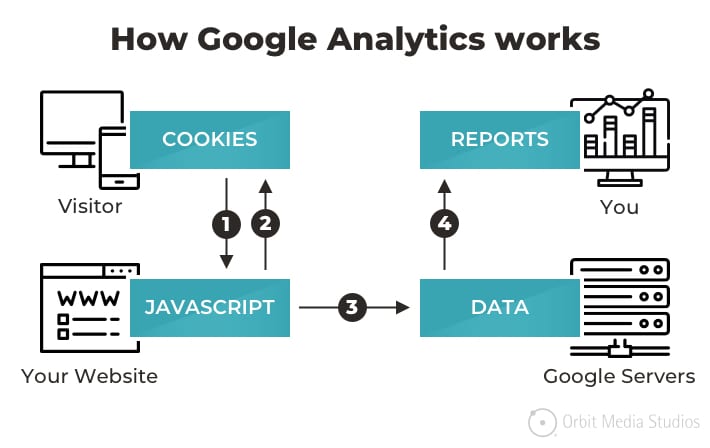Unloading the Secret: When Does the Google Analytics Tracking Code Send an Event Hit to Analytics?
Master Website Insights With Accurate Google Analytics Monitoring Code
The effective utilization of Google Analytics rests on the specific execution of its monitoring code, an essential action usually forgotten by website owners. This seemingly simple JavaScript fragment, when appropriately positioned, comes to be the foundation of data collection, giving insights into customer habits and web site efficiency. However, challenges can emerge throughout arrangement, potentially skewing the data and causing mistaken decisions. Recognizing these ins and outs is vital for making best use of the advantages of analytics. What are the common challenges that could threaten your tracking initiatives, and how can you make certain accuracy in your strategy?
Recognizing Google Analytics Basics
Google Analytics is an important device for website proprietors and marketers, supplying important understandings right into user habits and website performance. At its core, Google Analytics accumulates data concerning site visitors to an internet site, enabling customers to analyze metrics such as web traffic resources, user interaction, and conversion prices. Comprehending these principles is important for maximizing a website's efficiency and enhancing customer experience.
The platform employs cookies to track communications, recording data such as page sights, session periods, and bounce prices. This information is accumulated and offered through adjustable control panels, enabling individuals to envision trends over time. Key performance signs (KPIs) can be monitored, such as the total variety of users, new versus returning visitors, and the geographic distribution of the target market.
Additionally, Google Analytics uses division functions, permitting individuals to isolate certain web traffic resources or individual demographics for more targeted analysis. By understanding these foundational aspects, site proprietors can make informed choices concerning material technique, advertising campaigns, and overall website renovations. Inevitably, comprehending Google Analytics fundamentals is important for leveraging data to drive growth and attain service goals successfully.
Setting Up Your Tracking Code

Copy the provided monitoring code and paste it right into the HTML of your internet site. Preferably, this code must be placed in the header section of every page you want to track. This guarantees that the tracking code loads before any kind of other material, enabling it to record information precisely. If you are making use of a material management system (CMS) like WordPress, there are plugins available that streamline the integration process.
After installment, validate that the tracking code is operating correctly by using Google Tag Aide or the Real-Time reports in Google Analytics - when does the google analytics tracking code send an event hit to analytics?. This action is vital to verify that your data collection is accurate and energetic, setting the structure for insightful analysis
Usual Tracking Code Issues
This may happen when the monitoring code is put in the incorrect section of the web site's HTML, often leading to missing or incomplete information. In addition, having several circumstances of the monitoring code on a solitary page can result in filled with air metrics, as customer communications might be counted extra than when.
One more issue occurs from using advertisement blockers, which can stop the monitoring code from performing entirely, therefore skewing information. when does the google analytics tracking code send an event hit to analytics?. Moreover, failure to configure filters correctly can bring about the exclusion of essential web traffic sources or the inclusion of unwanted referral spam, misshaping the information collected
Site owners may additionally forget the relevance of monitoring code updates, specifically when migrating to Google Analytics 4 (GA4) from Universal Analytics. Lastly, insufficient screening prior to launching changes can read review cause unseen mistakes in the monitoring code, better making complex data integrity. Dealing with these common issues is vital for making certain accurate monitoring and informative analytics.
Analyzing Site Data Effectively
Exact information collection is just the initial step in leveraging Google Analytics; the actual worth exists in successfully evaluating that data to drive educated decision-making. To achieve this, it is important to identify vital performance indicators (KPIs) that line up with your organization objectives. Focus on metrics such as conversion rates, user interaction, and web traffic sources, as these will certainly supply insights right into individual behavior and the total effectiveness of your website.
Utilizing Google Analytics' division features permits a deeper understanding of your target market. By breaking down information right into certain demographics, habits, and website traffic channels, you can discover trends and patterns that educate targeted methods. Implementing custom-made records and dashboards can simplify this process, making it possible for quick access to essential data.
Moreover, frequently assessing information trends gradually assists to identify anomalies and possibilities for improvement. Use visualization tools to present data in a quickly absorbable useful link style, promoting more efficient interaction with stakeholders. Eventually, the capability to assess website data properly empowers services to make calculated decisions that boost user experience, optimize advertising initiatives, and drive development.

Best Practices for Accurate Monitoring
Implementing effective monitoring practices is crucial for acquiring dependable information in Google Analytics. To make certain precise tracking, start by appropriately setting up the Google Analytics tracking code on every page of your internet site. This can be completed through a tag manager or by directly embedding the code into the HTML.
Following, configure your Google Analytics account to exclude interior traffic. This can be done by establishing filters that identify and remove visits from your company's IP address, thus stopping manipulated data. In addition, use event monitoring to monitor certain customer interactions, such as downloads or video clip plays, which standard page sights may ignore.
On a regular basis investigate your monitoring arrangement to verify that all features, such as objectives and ecommerce tracking, are functioning appropriately. Develop a regular naming convention for your events and projects to promote much easier coverage and evaluation.
Last but not least, take into consideration leveraging UTM criteria for campaigns to obtain insights right into the efficiency of different marketing efforts. By adhering to these ideal methods, you can boost the accuracy of your data collection and analysis, eventually resulting in even more enlightened decision-making for your website.
Verdict
By making sure the monitoring code is appropriately placed and regularly examined, internet site proprietors can catch vital user communication information, hence facilitating the identification of vital performance signs. Inevitably, a robust tracking structure boosts the ability to drive engagement and boost general internet site performance.

Not enough screening before introducing changes can result in undiscovered mistakes in the tracking code, better complicating data dependability.Carrying i thought about this out efficient tracking techniques is essential for obtaining trusted information in Google Analytics. By making sure the tracking code is properly placed and on a regular basis audited, website owners can capture important customer communication data, hence helping with the recognition of essential performance indications.